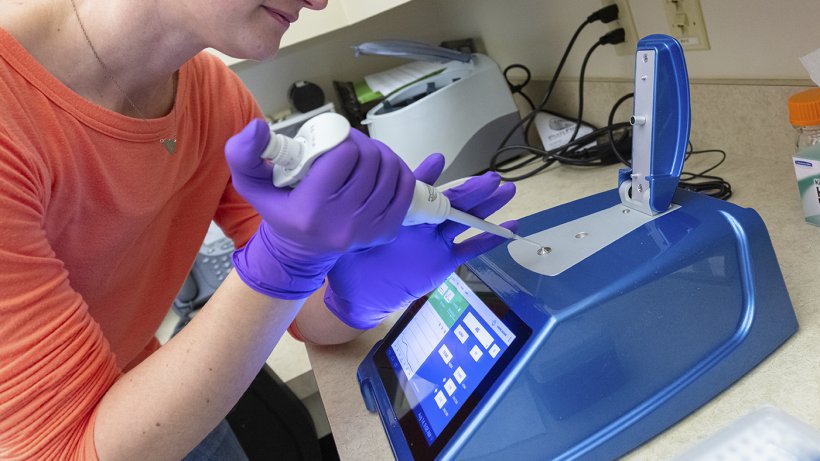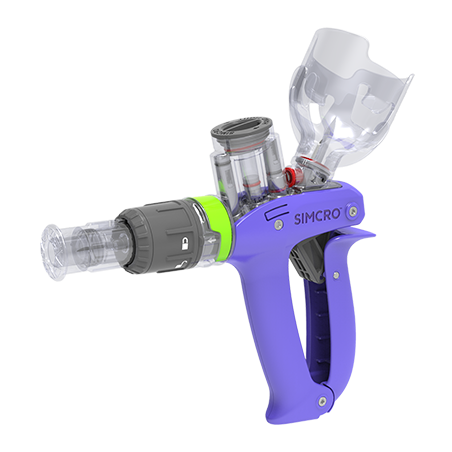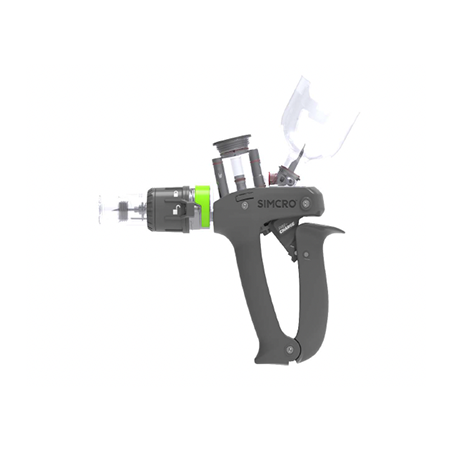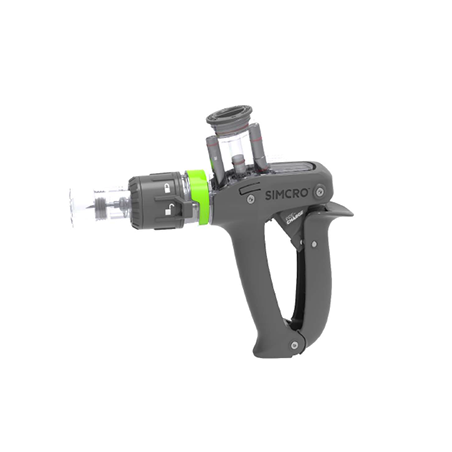Some uses for PCR assay:
- Detect presence of DNA/RNA of a targeted pathogen – Most common use
- Serotype a pathogen by targeting specific genes (DNA/RNA) known to vary between serotypes (e.g. capsule biosynthesis genes for Actinobacillus pleuropneumoniae)
- Detection of presence of virulence genes (e.g., E. coli genotyping)
It is important to remember that PCR assays only detect the presence of the targeted genetic material based on primers and does not indicate whether the organism may be infectious or not. When testing for genes, the assay only detects the presence of the gene but not whether the organism is expressing the virulence factor detected.

In recent years, multiplex PCR have been developed by laboratories to test for multiple pathogens, or multiple strains or genes of the same pathogen, at the same time. These multiplex PCR are multiple PCR that are being run at the same time. Their cost is higher than individual PCRs but significantly less expensive than running the PCRs separately since there are significant savings for the laboratory regarding equipment usage, laboratory personnel, and use of reagents. The lab will use different markers to help identify which positive results belong to which primers. Often, these multiplex PCRs make sense such as testing E. coli genotyping where some 14 genes can be evaluated on the same bacterial isolate at the same time. Another example is testing for both PRRS type 1 and type 2 at the same time. One other common testing scheme is to test for porcine epidemic diarrhea and porcine delta coronavirus at the same time. It is critical to note that the development of these assays is not always easy as the laboratory needs to make sure that there is no interference between the different PCR assays. That is that the cycling temperatures and the different primers used are not inhibiting or cross reacting with each other. Each of these multiplex PCR must be validated before used and a significant optimization of the assay must occur.

Considerations in interpreting results:
One of the challenges with PCR assays is that often each laboratory has a different protocol for their sample testing which may include differences in the DNA/RNA extraction process, differences in cycling protocols, as well as differences in primers used. This can make it challenging to make close comparisons in the results obtained from different laboratories.
Negative result
- Sample/herd truly negative for pathogen
- Ensure proper sample was submitted for the targeted pathogen. Some classic examples to consider:
- Influenza virus does not go systemic and thus will not be found in blood samples.
- Oral fluid testing for Mycoplasma hyopneumoniae rarely provides a positive result as the pathogen is usually attached to cilia lower in the respiratory system
- Submitting only 1 fetus from a PRRS abortion (only 50% chance of being positive), should submit at least 4 fetuses to maximize chances of finding a positive sample
- Sample collected too late in the disease and the pathogen is not present anymore.
- Influenza virus present in nasal secretions only for first 3-4 days
- Primer mismatch
- New PRRS strain
- Low prevalence in the herd and animal(s) sampled were not infected
- Need to significantly increase the number of animals sampled
- Dilution of a weak positive sample due to pooling
- Pooling of oral fluids which are traditionally already diluted samples (testing multiple pigs and already expected high Ct values in positive samples)
Positive sample
- Sample/herd truly positive for pathogen
- Unable to differentiate if sample is infectious or non-infectious
- Depending on targeted pathogen, detection of DNA/RNA does not always confirm disease
- PCR positive lung tissue for Mycoplasma hyopneumoniae confirms the presence of the organism in the tissue but does not confirm the severity or clinical significance of the pathogen. In most herds, (excluding Mycoplasma negative herds) need to visually confirm the percentage of lung damage (gross evaluation) to determine clinical significance of findings.
- Serum that tests PCR positive for porcine circovirus type 2 (PCV2) confirms the presence of PCV2 but does not confirm whether wasting or pneumonia are attributable to PCV2 or whether vaccine failure has occurred. Need to do immunohistopathology of lung and or lymph tissue to demonstrate disease associated with PCV2.
- Assay may not be able to differentiate vaccine virus/bacteria from modified live vaccine from wildtype infection.
- Critical to know the timing and type of vaccine used
- Sequencing information may be needed
- Cross contamination if samples are not handled properly
- Especially true when doing pooling of samples. Pooling should be done under a laboratory hood.
- Fecal samples collected from floor can be cross contaminated with environmental remnants of the pathogen
- Low Ct values are associated with high viral/bacterial concentration in sample and can often be correlated with higher likelihood to be associated with clinical disease
- Low Ct values of Lawsonia intracellularis in feces are more likely to be associated with intestinal lesions.
- Ct < 20 → Porcine Proliferative enteropathy
- Ct > 30 → No intestinal lesions detected
- Low Ct values of Lawsonia intracellularis in feces are more likely to be associated with intestinal lesions.
Genotyping
- Use of PCR genotyping is becoming more common especially for E. coli. It provides epidemiological information regarding changes in isolates impacting the herd (e.g., Influenza H1N1 vs H3N2).
- Often genotyping results are used in helping select vaccine to use such as with E. coli (confirming pili).
- Important to remember that the results only represent a single isolate and often pigs are infected with multiple isolates at the same time.
- Detection only confirms the presence of the virulence genes but does not confirm its expression. Often just knowing it has the genetic potential to express the gene is good enough.
- As the cost and ease of gene sequencing continue to decrease, the use or need for PCR genotyping will decrease.









